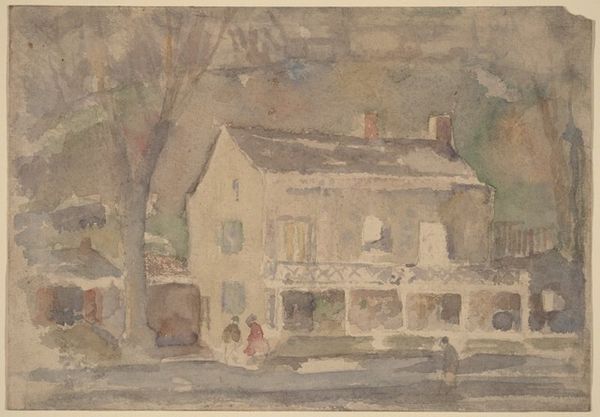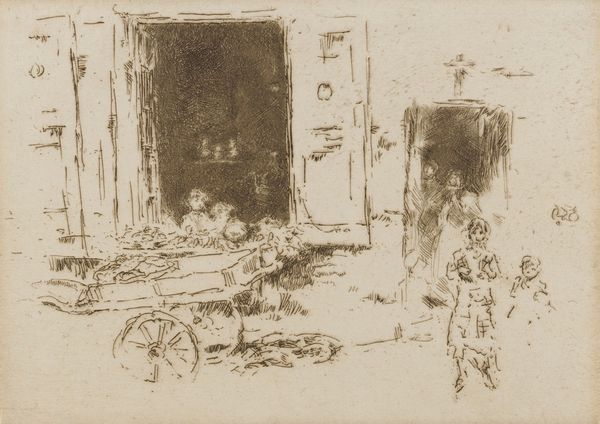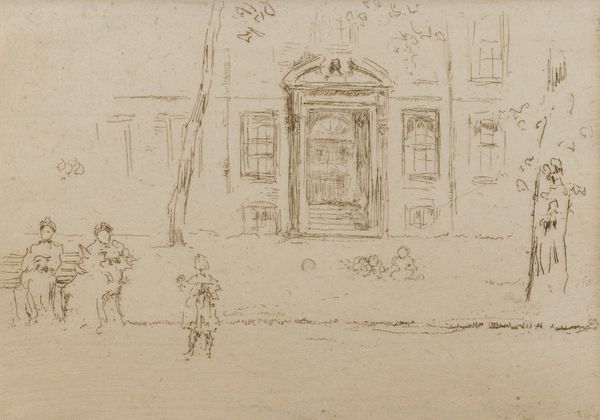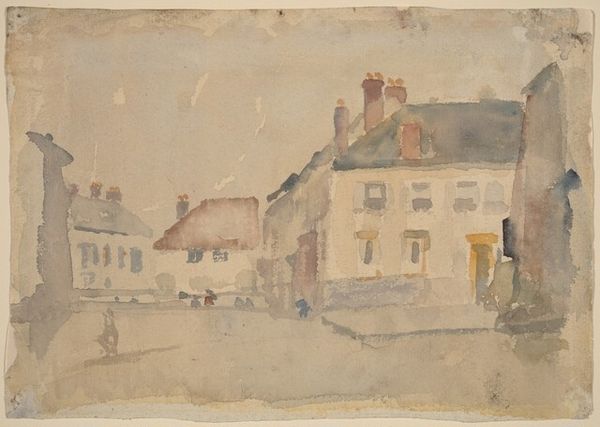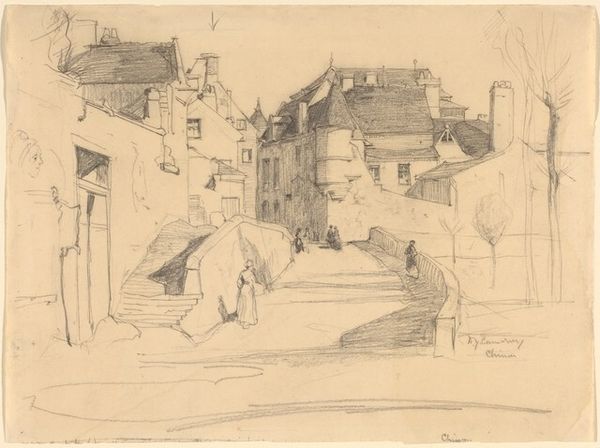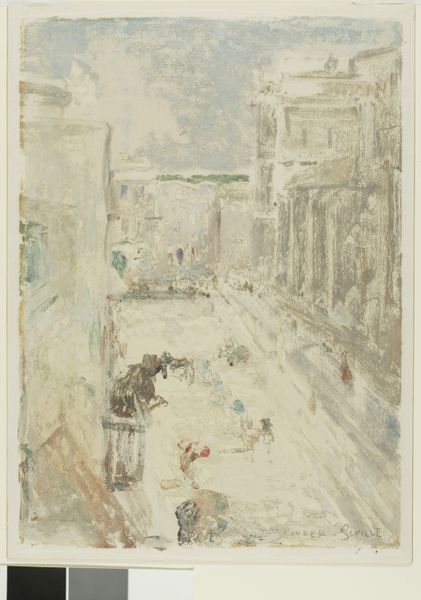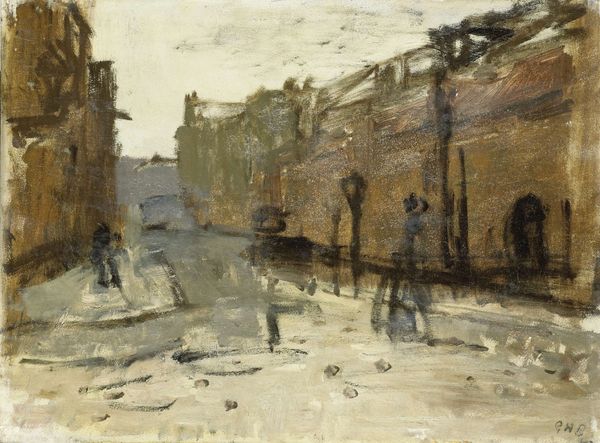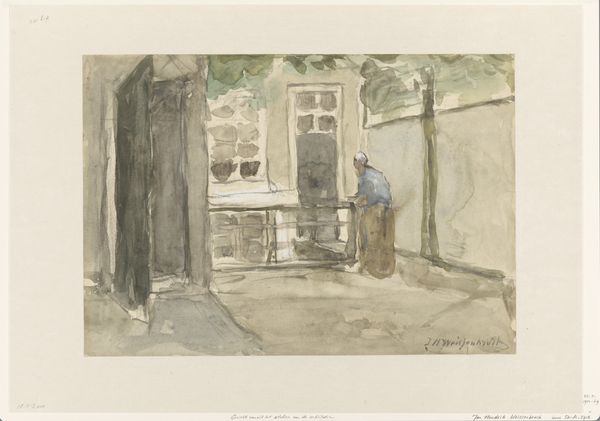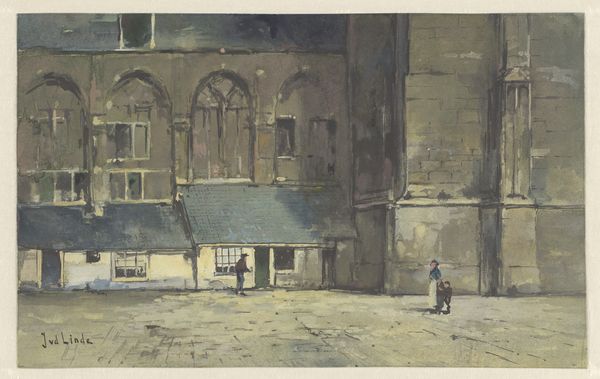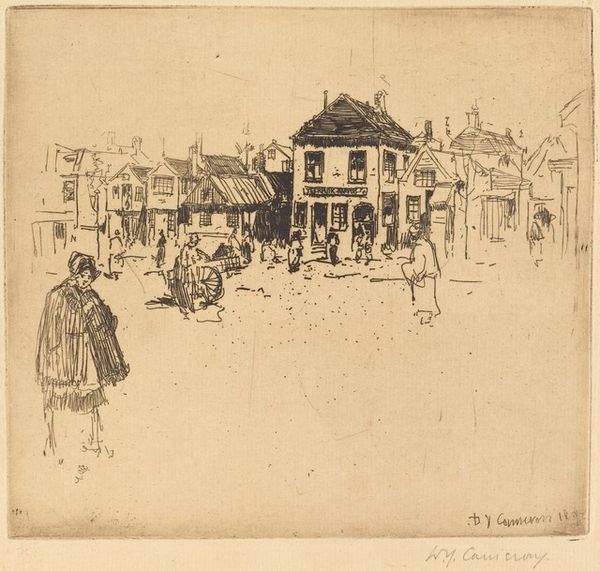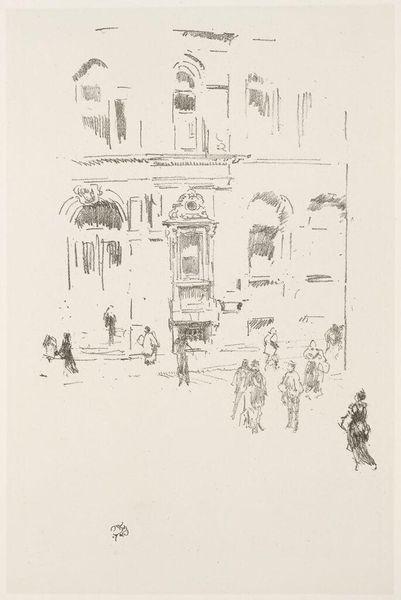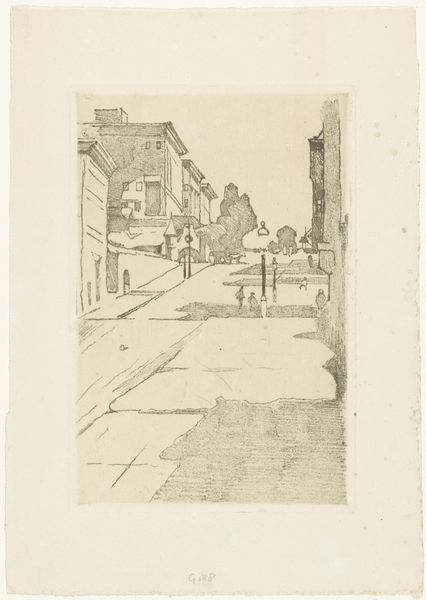
drawing, painting, watercolor
#
drawing
#
water colours
#
painting
#
impressionism
#
landscape
#
watercolor
#
cityscape
#
genre-painting
#
watercolor
Copyright: Public Domain: Artvee
Curator: This is James Abbott McNeill Whistler’s "Village Shop, Chelsea," a watercolor executed between 1883 and 1884. Editor: My first impression? A muted snapshot of everyday life, almost ghostly. The colors are so subdued, like a memory fading at the edges. I immediately want to know, what was Chelsea like then? Curator: Chelsea was undergoing rapid social change at that time, a shift visible even in Whistler's choice of subject. The working class neighborhood slowly transitioning. Editor: You see the transition, but what jumps out to me is the artist's process. The thin washes of watercolor reveal a tangible, unedited handling of the material, as if the very act of painting were as important as what was being represented. The materiality speaks volumes, don’t you think? The social and the art-making become inseparable in how we consider art in culture. Curator: I do, but I think its value also lies in its snapshot of Victorian London. It provides insight into how urbanization impacted everyday interactions in spaces designed around commercial activities. Whistler, an American abroad, documents this shift which tells us much about what constituted “Englishness” for outsiders like Whistler, during the expansion of the Empire. Editor: Exactly! And you see how the medium itself facilitates that reading? Watercolors, often associated with quick sketches or preliminary studies, when instead here it encapsulates a changing world, it forces a reconsideration of both the artistic technique, but the place in art history in how such watercolor pieces are valued by audiences and the art market alike. Curator: Certainly. But I'm struck by how the subtle color palette and the soft focus create a sense of nostalgia, evoking a particular mood that only intensifies over time. This nostalgic appeal likely contributed to its warm reception among Victorian-era art collectors, eager to display such slices of modern British life in their galleries. Editor: The work provides not just visual data on London's urbanization, but forces a discussion on watercolor as an acceptable means of artistic exploration and expression and even, commentary. It offers insight to both how a world changes materially, as much as how its depiction solidifies how the artist chooses his tool of expression. It becomes inextricably intertwined. Curator: An interesting way to summarize a nuanced painting like this one. Editor: Indeed, it showcases the everyday while demanding attention to art's inherent ability to act as a product of—as much as a commentary of—historical forces.
Comments
No comments
Be the first to comment and join the conversation on the ultimate creative platform.
